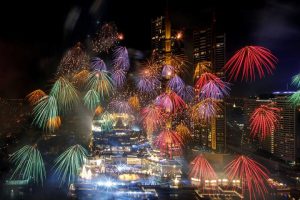Can you Name all of these Asian Capitals?
The busy intersection of Main Street, Kissena Boulevard, and 41st Ave. in the Flushing Chinatown (法拉盛華埠), Queens, rent condo in bangkok NYC. Chinese population outside Asia. The Elmhurst Chinatown (艾姆赫斯特) on Broadway in Queens is now a satellite of the Flushing Chinatown. Flushing is undergoing rapid gentrification by Chinese transnational entities. The cultural heart of Flushing Chinatown is Main St. between Kissena Boulevard and Roosevelt Ave., punctuated by the Long Island Rail Road trestle overpass. With more than 30,000 residents born in China alone, the largest by this metric outside Asia, Flushing is home to largest and fastest-growing Chinatown in the world.
However, in Brooklyn, Fuzhou speakers predominate in the large Chinatown in Sunset Park while the several smaller emerging Chinatowns in various sections of Bensonhurst and in a section of Sheepshead Bay are primarily Cantonese speakers, unlike in Manhattan’s Chinatown, where the Cantonese enclave and Fuzhou enclave are directly adjacent to each other. Cantonese is the main variety of Chinese spoken in Bensonhurst’s and Sheepshead Bay’s Chinatowns, since they are mostly Cantonese populated; Mandarin is another, but less dominant variety. Therefore, Mandarin and Cantonese dialects significantly varies between the different Chinatowns of Sunset Park, Bensonhurst and Sheepshead Bay.
The Chinese immigrant population in New York City grew from 261,500 foreign-born individuals in 2000 to 350,000 in 2011, representing a more than 33% growth of that demographic. As many immigrant Chinese to New York City move up the socioeconomic ladder, many have relocated to the suburbs for more living space as well as seeking particular school districts for their children. Chinese immigrants represented 12,000 of the country’s asylum requests in fiscal year 2013, of which 4,000 applied for asylum to the New York-area asylum office.
U.S. Department of Homeland Security. United States Census Bureau. Civitatis New York. Retrieved August 18, 2022. As its name suggests, Chinatown is where the largest population of Chinese people live in the Western Hemisphere. U.S. Department of Homeland Security. Waxman, Sarah. “The History of New York’s Chinatown”. United States Census Bureau. Yearbook of Immigration Statistics: 2013. Department of Homeland Security. Lee, Josephine Tsui Yueh (2007). New York City’s Chinese Community. United States Census Bureau.
This excludes fledgling ethnic Chinese enclaves emerging throughout the New York metropolitan area, such as Jersey City, New Jersey; China City of America in Sullivan County, New York; and Dragon Springs (in Deerpark, Orange County, New York), which serves as the de facto headquarters for both the global Falun Gong New religious movement as well as its Shen Yun performance arts troupe. The Chinese American community in the New York metropolitan area is rising rapidly in population as well as economic and political influence. Chinese population in the New York metropolitan area; this immigration and its accompanying growth in the impact of the Chinese presence continue to be fueled by New York’s status as an alpha global city, its high population density, its extensive mass transit system, and the New York metropolitan area’s enormous economic marketplace.
Chinese New Year was signed into law as an allowable school holiday in the State of New York by Governor Andrew Cuomo in December 2014, as absentee rates had run as high as 60% in some New York City schools on this day. Beginning in 2006 many Chinese Catholics began worshipping at St. John Vianney Church in Flushing. In June 2015, New York City Mayor Bill de Blasio declared that the Lunar New Year would be made a public school holiday.


